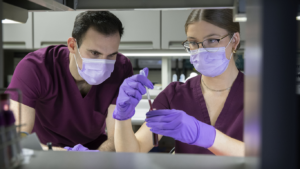Healthcare facilities demand meticulous hygiene to protect patients and staff. Medical-grade cleaners and disinfectants are powerful allies against infectious pathogens. They precisely eradicate harmful microbes, preventing outbreaks that can devastate an entire ward.
Shortcuts are not an option. Failing to maintain rigorous standards leads to dangerous infections and compromised patient safety.
Global health institutions such as the World Health Organization (WHO) and the Centers for Disease Control and Prevention (CDC) have underscored the significance of medical-grade disinfectants. Healthcare settings teem with high-touch surfaces like bed rails and IV stands, which can harbor bacteria if left unchecked.
MORE NEWS: Phoenix bucket list: 25 things you must do
Choosing the Right Disinfectant
Selecting an effective product is pivotal. A broad-spectrum agent that targets bacteria, viruses, and fungi helps maintain a healthy environment for patients of various acuities. Assessing these solutions means examining active ingredients that promise comprehensive coverage. Quaternary ammonium compounds, for instance, can tackle enveloped viruses and certain yeast strains.
Regulatory oversight from organizations like Health Canada adds a layer of assurance. This is where reputable medical supplies in Canada prove invaluable. They offer disinfectants that fulfill stringent compliance standards, ensuring peace of mind for infection-control teams. Verifying a disinfectant’s Drug Identification Number (DIN) confirms its legitimacy and efficacy.
Proper Application and Safety Measures
Preparation is everything. Each disinfectant has a recommended contact time, during which surfaces must remain wet for optimal germicidal action. Skimping on this interval can significantly diminish effectiveness. Dilution, if required, should follow the manufacturer’s instructions with no guesswork involved.
Overly concentrated solutions pose health risks, while insufficient strength may lead to inadequate disinfection.
Personal Protective Equipment (PPE) shields staff and patients from inadvertent exposure. Nitrile gloves, gowns, and masks are primary bulwarks when handling potent chemicals. Employees should be encouraged to don protective gear even for brief cleaning tasks.
Storage and disposal protocols also demand attention. Many disinfectants have a defined shelf life. Using products beyond that date compromises their antimicrobial properties. Storing them in cool, dry spaces maintains stability. Proper disposal per local regulations prevents ecological harm.
These details may seem minor, but overlooking them can unravel even the most carefully crafted infection-control program.
Preventing Cross-Contamination
Targeting high-touch areas with scheduled cleanings curbs the spread of microbes. Bed rails, doorknobs, and medical instruments often harbor elusive pathogens. Thoroughly disinfecting these surfaces, especially in intensive care units, interrupts contamination cycles. Adopting a daily routine that does not overlook ancillary zones like waiting rooms and staff lounges is essential.
Frequent training and performance monitoring amplify the effectiveness of protocols. Staff members who understand contamination risks practice better hygiene. They learn to change gloves before touching different patients and to sanitize all equipment properly between uses. Random audits and immediate feedback reinforce correct behaviors.
A Lasting Shield Against Infection
Healthcare facilities must stay vigilant. Adopting the right cleaners, applying them systematically, and empowering staff through education create a formidable shield against dangerous microbes. In a world where disease-causing organisms evolve rapidly, adherence to precise standards is non-negotiable.
Commitment to consistent disinfection, supported by high-grade medical supplies and trusted Canadian healthcare distributors, fortifies patient care with unyielding resolve.




